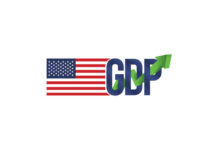An abrupt change in perspective amongst FOMC members has led us to bring forward US policy normalisation. 2013-2018 provides an excellent benchmark.
As detailed by our Chief Economist Bill Evans on Friday, following the FOMC’s June meeting, we have materially revised our timeline for a US taper and their next rate hike cycle.
Ahead of the meeting, we forecast the taper would run through the second half of 2022, with rate hikes delayed until 2024. Now we anticipate Federal Reserve purchases to be tapered through the first half of 2022 after the policy change is announced in September 2021 – conditional on key data performing. Rate hikes are then expected to begin in December 2022.
How can one event shift expectations so far? Simply, on display in the June FOMC meeting communications was an abrupt shift in the perspective of the Committee, from a risk-focused mindset to a constructive, pragmatic approach. This is most apparent in the FOMC’s characterisation of the labour market.
In the April press conference, Chair Powell focused attention on the 8.4 million jobs still to be recovered and the fact that “participation in the labor market remain[ed] notably below pre-pandemic levels”.
The June meeting in contrast dropped the quantitative reference to the deficiency in employment, even though it had only been reduced modestly to 7.6 million since; and, while historically-weak participation was cited again, the focus was on participation increasing in the months ahead as the vaccine drive takes effect and the economy reopens.
Highlighting that increased labour supply is expected to be matched by demand, the unemployment rate is forecast by the FOMC to fall from 5.8% to 4.5% by year end, then to 3.8% and 3.5% at the end of 2022 and 2023 – the latter a level consistent with ‘maximum employment’. During Q&A, Chair Powell added he believed the US will have “a very strong labor market pretty quickly here”.
Regarding inflation, while the FOMC continue to believe the current elevated level will prove transitory, for the medium-term their concern has clearly shifted from the historic deficiency versus target to the wage and price momentum that should be created through a rapid reopening of the economy and an eventual return to ‘maximum employment’.
The median headline inflation expectation of the Committee for 2022 and 2023 of 2.1% and 2.2% signals a belief their inflation ambitions will be met. And, on the risks, Chair Powell made clear the Committee’s focus is to the upside, stating in the press conference that the Committee is “prepared to adjust the stance of monetary policy” if there are “signs that the path of inflation or longer-term inflation expectations were moving materially and persistently beyond levels consistent with our goal”.
It is important to note though that the Committee is not in a rush to tighten now, or into the medium term. The Committee is only beginning their discussion on tapering and rate hikes are not (yet) part of the conversation.
We believe the chronology of events through 2013 to 2018 provides a good benchmark for the coming cycle of policy normalisation; however, the expected strength of the labour market and household balance sheets should see a more rapid normalisation this time around.
For perspective, in 2013, near a year of internal discussions and seven months of communication with the market occurred before the FOMC formally announced a taper in December. The taper then ran from January until October 2014, but it wasn’t until December 2015 and December 2016 that the first and second rate hikes were seen. The third and fourth hikes followed in first-half 2017 and, from December 2017 to December 2018, another five rate hikes were then seen, taking the federal funds rate to 2.375%.
By the time this cycle’s taper begins in January, the unemployment rate is expected to be around 4.5%, more than 2 percentage points below its level at end-2013. This will allow the FOMC to cease asset purchases over a six-month period compared to the 10 months seen in 2014, and should also lead the Committee to start the rate hike cycle with a shorter delay. Instead of occurring with delays of circa 12 months, the first two hikes in this cycle are forecast six months after tapering concludes and just 3 months apart – in December 2022 and March 2023.
Subsequent, if the Committee is right in its belief that inflation will only be modestly above target in 2023, then there will be no rush for the FOMC to push on with a string of rate hikes. Instead, just one more hike to 0.875% is seen in June 2023 followed by a ‘pause to assess’ of at least six months.
Looking past our forecast horizon to 2024 and beyond, the FOMC’s longer-run projection of 2.5% suggests a peak in the coming cycle in keeping with that of 2018. The latter part of this cycle is however only likely to come when necessary, as wage and inflation pressures build. If they remain benign, expect the FOMC to be slow to move, in pursuit of the best long-run outcome for the economy.














